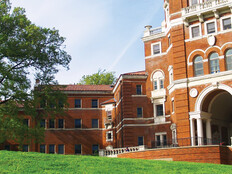How Universities Can Plan for Wi-Fi 6
To make best use of the emerging Wi-Fi capabilities, higher education IT leaders must do some thoughtful planning. They’ll need to consider physical spaces and anticipated bandwidth usage.
“You can start with a site survey, looking at the terrain,” Cheung says. Determine where and how students and faculty will be using the Wi-Fi, considering all possible scenarios.
The obvious use case is classroom connectivity, but that’s an increasingly complex consideration. For example, there are equity issues that can be overlooked. “Suppose you have five kids working in a group and just one of them is working from home,” Cheung says. “That means all six kids need to be on Zoom. You must have equal access for everybody.”
RELATED: Is your campus ready for Wi-Fi 6?
There are other variables to consider as well. How many devices will each student be carrying, not just this fall but one or two years down the road?
“I am a little bit conservative in that I use a rule of thumb of three devices per kid,” Cheung says. “My daughter has her cell phone, her iPad to take notes in class and her computer. But if you’re looking to the future, you probably want to plan for more.”
IT leaders will need to also consider the types of data in play. In addition to streaming classroom sessions, schools may need to support vast volumes of research data, along with the inputs from a rising tide of Internet of Things devices that support everything from physical plant maintenance to campus security.
“It’s not just the number of devices,” Cheung says. “All of this has to be part of your planning, and it’s very hard to predict the future. Technology evolves every day, the use model evolves every day. You have to have a platform that allows you to scale out, meaning you can add more devices, and scale up, meaning you can upgrade the technology.”












